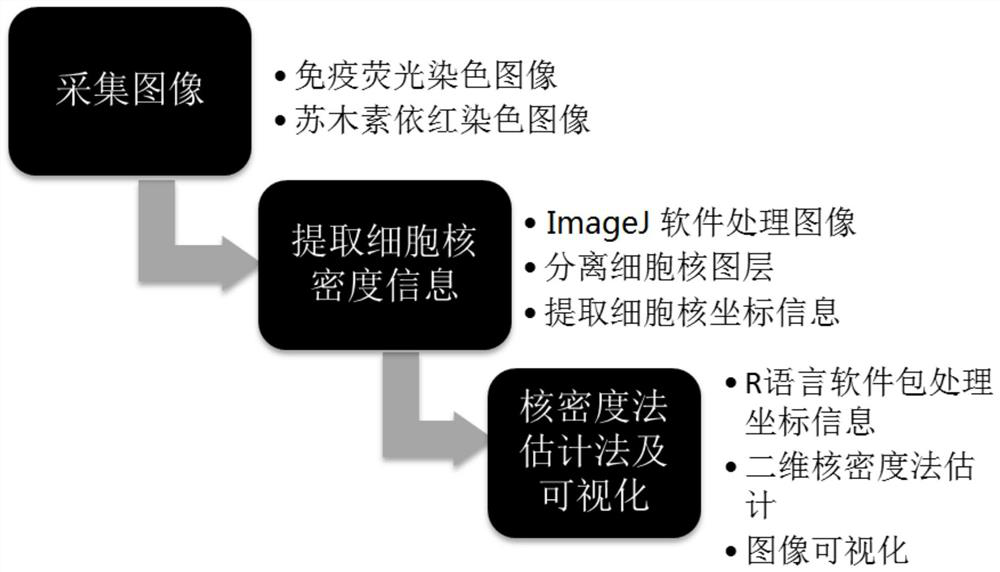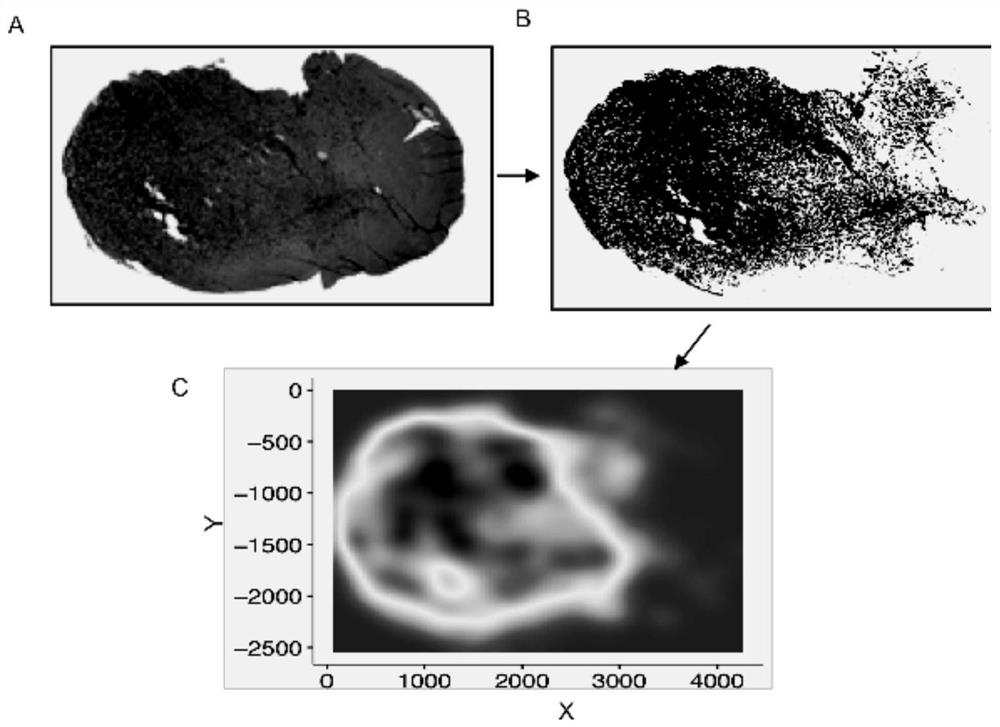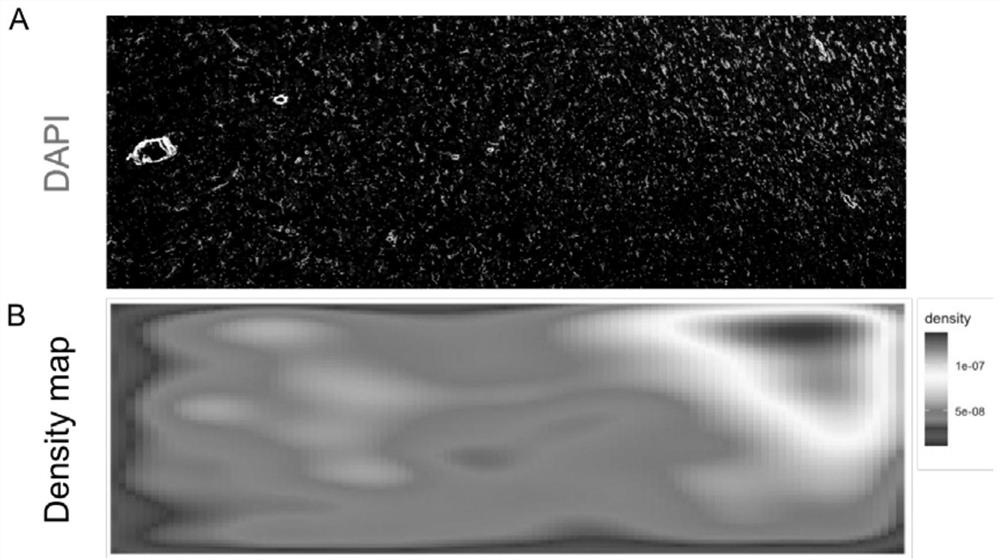Visualization method for quantifying glioma invasiveness based on kernel density function
A technology of kernel density function and glioma, applied in the field of biomedicine, can solve the problems of high labor cost, inability to reflect the characteristics of local tissue density well, time-consuming and labor-intensive problems, etc.
- Summary
- Abstract
- Description
- Claims
- Application Information
AI Technical Summary
Problems solved by technology
Method used
Image
Examples
Embodiment 1
[0069] Such as figure 1 A visualization method for quantifying glioma invasiveness based on the kernel density function is shown, and the specific steps are as follows:
[0070] (1) converting each cell nucleus in the glioma tissue section into a binary image;
[0071] The concrete method of step (1) is as follows:
[0072] (1-1) Using an image acquisition device to collect images of glioma tissue slices, and import them into ImageJ software; ( figure 2 Middle A)
[0073] (1-2) Open the picture, run FUJI's Macro code for batch processing, select the color threshold, and select the Convert to Mask column to obtain a binarized image.
[0074] In step (1-1), the image of the glioma tissue section is HE or immunofluorescence image.
[0075] The specific process of step (1-2) is as follows:
[0076] (1-2-1) Run FUJI software, open HE image or confocal scanning image; open("… / … / …");
[0077] (1-2-2) Automatically select the color threshold; setAutoThreshold("Default dark no-r...
Embodiment 2
[0116] Another immunofluorescence image of human glioblastoma was selected and visualized according to the method in Example 1. The results show that this system can well reflect the density of nuclei in the local area ( image 3 ), and can be accessed from image 3 Trends in tumor invasion were accurately identified. The upper right corner of the figure is the area with high nuclear density, which is the core area of the tumor, while the left side is the tumor invasion area. It can be clearly found that there are dark color blocks covering the invasion front, which means that the density of this area is relatively high.
PUM
 Login to View More
Login to View More Abstract
Description
Claims
Application Information
 Login to View More
Login to View More - R&D
- Intellectual Property
- Life Sciences
- Materials
- Tech Scout
- Unparalleled Data Quality
- Higher Quality Content
- 60% Fewer Hallucinations
Browse by: Latest US Patents, China's latest patents, Technical Efficacy Thesaurus, Application Domain, Technology Topic, Popular Technical Reports.
© 2025 PatSnap. All rights reserved.Legal|Privacy policy|Modern Slavery Act Transparency Statement|Sitemap|About US| Contact US: help@patsnap.com



